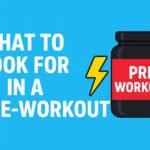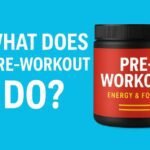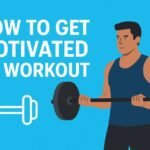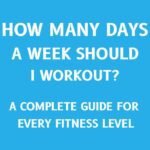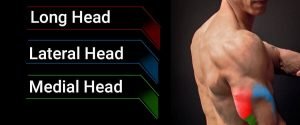Should You Workout When You’re Sore? Let’s Break Down the Truth
You smash a brutal leg session, hit failure on every set, and wake up the next morning barely able to sit on the toilet. You’re proud of the pain — it feels like proof of hard work. But there’s a voice in your head asking, should you workout when you’re sore?
This question haunts every serious lifter. Whether you’re prepping for a show, pushing past a plateau, or chasing that next level of growth, there’s a fine line between dedication and self-destruction. Some athletes train through soreness thinking it’s a badge of honor. Others swear that resting is where real progress happens.
So what’s the right answer? Let’s dive into the science, experience, and hardcore bodybuilding logic behind when to push through and when to back off.
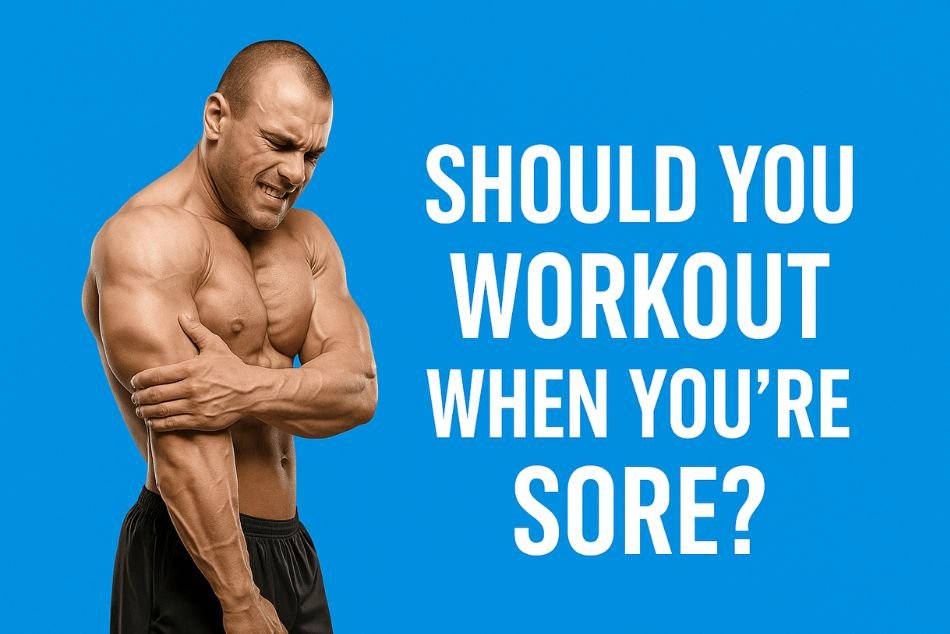
Understanding Muscle Soreness: What’s Really Going On Inside Your Muscles
What Is DOMS (Delayed Onset Muscle Soreness)?
Delayed Onset Muscle Soreness, or DOMS, is that deep, aching stiffness you feel 24 to 72 hours after a tough session. It’s caused by microtears in your muscle fibers — the natural damage that occurs when you lift heavy or introduce new stimulus. Your body responds by repairing those tears, which makes muscles stronger and thicker over time.
Contrary to old gym myths, soreness isn’t from lactic acid buildup. It’s actually part of your body’s inflammatory response as it heals and adapts. For bodybuilders, this process is necessary — but too much of it can delay recovery and hinder performance.
The Difference Between Good and Bad Soreness
- Good Soreness (DOMS): A dull, even ache in the trained muscle, not affecting mobility too much.
- Bad Soreness (Injury Pain): Sharp, localized pain or swelling that limits range of motion.
Knowing the difference separates disciplined athletes from reckless ones. Hardcore doesn’t mean careless — it means understanding your body better than most.
How Soreness Fits Into Muscle Growth
Muscle soreness tells you one thing — you stressed your muscles. But soreness itself doesn’t equal muscle growth. Growth happens during recovery, when your body rebuilds stronger fibers. Without rest, nutrition, and sleep, those fibers can’t repair properly. That’s why balancing intensity with recovery is the true art of bodybuilding.
Should You Workout When You’re Sore? Here’s the Real Answer
Let’s be real — there’s no single “yes” or “no.” Whether you should train depends on how sore you are, what muscle group is sore, and how your recovery is progressing.
When most lifters ask should I workout when I’m sore, what they’re really asking is whether training sore muscles slows gains or helps them. The answer lies in understanding your recovery capacity.
1. Mild Soreness: Training Can Help
If the soreness is mild — a tightness or dull ache — training can actually speed up recovery. Light movement increases blood flow, delivering oxygen and nutrients that help repair muscle fibers faster.
This is why many pros include “pump sessions” or light cardio on rest days. A few sets of leg extensions after leg day, or pushups after chest day, can work as active recovery. It’s not about ego-lifting but about promoting healing.
2. Moderate Soreness: Train Smart or Switch Muscle Groups
If you’re moderately sore, it’s fine to train — but avoid hitting the same muscle group again. For example, if your back is fried, work on chest or arms. This allows recovery while keeping training momentum.
A well-structured split (like push/pull/legs) naturally prevents overuse. Hardcore lifters know how to plan their splits around recovery, not emotion.
3. Severe Soreness: Rest or Active Recovery Only
If soreness is so bad that you’re limping or struggling to lift your arms, take a rest day. Training through extreme soreness leads to poor form, reduced strength, and even injury.
Pushing through severe DOMS doesn’t make you tough — it just delays recovery and can backfire. Rest is part of growth. Pros like Dorian Yates built world-class physiques by respecting recovery as much as training.
4. The Mindset That Matters
Being a bodybuilder means living by structure. Knowing when to push and when to pause is part of that structure. If you’re constantly asking should you workout when you’re sore, remember: discipline isn’t about doing more, it’s about doing what’s optimal.
How to Train Smart When You’re Sore
Training sore doesn’t always mean stopping completely. The key is modifying your intensity and technique to support recovery.
1. Rotate Muscle Groups Intelligently
Use a split that naturally rotates recovery:
- Day 1: Push (Chest, Shoulders, Triceps)
- Day 2: Pull (Back, Biceps)
- Day 3: Legs
- Day 4: Rest or Active Recovery
This lets each muscle rest 48–72 hours — long enough for recovery, short enough for continuous progress.
2. Use Active Recovery
Low-intensity activities like light cardio, stretching, or pump work help circulation. A 20-minute incline walk or a few lightweight sets of curls can loosen stiffness and improve mobility.
Many pros also do light workouts the day after a brutal session just to flush out metabolic waste and bring nutrients to the muscles.
3. Adjust Intensity and Volume
Drop your weights by 20–30% if you’re training sore, or cut down on sets. Focus on strict form and time under tension rather than PRs. Machines and cables can be safer than heavy free weights on sore muscles.
4. Warm Up Longer
When you’re sore, your muscles are tighter and more prone to strain. Spend at least 10–15 minutes warming up — light cardio, band work, or dynamic stretches. It can make a big difference in reducing pain and improving performance.
Fueling Recovery: Nutrition for Soreness and Growth
Nutrition is the foundation of recovery. You can’t out-supplement or out-train poor fueling.
1. Protein: The Builder
Protein repairs the muscle damage that causes soreness. Aim for 1.6–2.2 grams of protein per kilogram of body weight. Prioritize high-quality sources — chicken, fish, eggs, whey, and casein.
A shake right after training and another protein-rich meal before bed helps maintain a positive nitrogen balance for recovery.
2. Carbs and Creatine
Carbs replenish muscle glycogen, your body’s energy storage. Without enough carbs, recovery slows and soreness lingers longer. Creatine also helps restore ATP energy, improving recovery between sets and sessions.
3. Hydration and Electrolytes
Muscles are 70% water. Dehydration worsens soreness and cramps. Include electrolytes — sodium, potassium, and magnesium — especially if you train intensely or sweat heavily.
4. Supplements That Support Recovery
- Omega-3s: Reduce inflammation.
- BCAAs / EAAs: Support muscle repair and reduce muscle breakdown.
- Glutamine: Aids recovery and immune function.
- Curcumin: Natural anti-inflammatory benefits.
While supplements help, they only work when diet and sleep are already in check.
Recovery Habits Hardcore Lifters Swear by
Bodybuilders know recovery is where growth happens. Here’s what separates the advanced from the average.
1. Sleep: The Anabolic Window
During deep sleep, your body releases growth hormone and testosterone — both crucial for muscle repair. Aim for 7–9 hours of quality sleep every night. Poor sleep increases cortisol, a catabolic hormone that slows recovery.
2. Massage and Foam Rolling
Foam rolling and deep tissue massages help break down adhesions and improve circulation. Even 10 minutes post-workout can reduce DOMS duration.
3. Sauna, Cold Plunge, and Contrast Therapy
Saunas boost blood flow; cold plunges reduce inflammation. Many pros alternate between hot and cold therapy to optimize recovery. It’s not just luxury — it’s performance strategy.
4. Rest Days That Actually Work
A rest day doesn’t mean lying on the couch all day. Use it for light cardio, mobility work, or even posing practice. Active recovery keeps your system moving without stressing the muscles.
Preventing Excessive Soreness in the First Place
You can’t avoid soreness entirely, but you can keep it manageable.
1. Progress Gradually
Don’t chase shock value workouts every week. Soreness doesn’t equal progress — consistency and overload do. Add volume or intensity slowly to allow adaptation.
2. Warm Up and Cool Down Properly
Dynamic warm-ups prepare muscles for load; cool-down stretches help reduce post-workout stiffness. Both lower the risk of severe soreness.
3. Schedule Deload Weeks
Even the hardest bodybuilders deload. Taking a lighter week every 6–8 weeks helps your central nervous system reset and muscles recover. It’s strategic, not lazy.
What Pro Bodybuilders Do When They’re Sore
Bodybuilders at the top level treat soreness as data, not drama.
- Dorian Yates trained with insane intensity but believed in recovery just as much. His “Blood and Guts” sessions were short but strategic, with plenty of recovery built in.
- Arnold Schwarzenegger often trained through light soreness, using it to maintain rhythm, but never through pain that affected form.
- Modern bodybuilders like Chris Bumstead focus heavily on recovery — sleep tracking, massages, and nutrition are part of their system, not afterthoughts.
Their secret? Consistency and controlled intensity — not blindly pushing every day.
Conclusion: Train Hard, Recover Harder
So, should you workout when you’re sore? The answer depends on your body’s feedback, not your ego. Mild soreness? Move through it. Severe soreness? Rest and rebuild. Real bodybuilding is about precision, not punishment.
Soreness is just a signal — not a challenge. Respect recovery the same way you respect training. Feed your muscles, sleep deeply, and train smart. That’s how strength, size, and longevity are built.
The next time you wake up aching and wonder, should I workout when I’m sore, remember: real gains happen when you recover right. So, should you workout when you’re sore? Only if you’re ready to outsmart your pain — not chase it.
FAQs
Q1) Should I Workout When I’m Sore or Take a Rest Day?
If soreness is mild, light training or active recovery is fine. If it’s severe and affecting form, rest is smarter.
Q2) Does Soreness Mean My Workout Was Effective?
Not always. Soreness means you created muscle stress, but growth depends on recovery, not pain levels.
Q3) What if I’m Sore All the Time?
You’re likely overtraining or under-recovering. Check your sleep, protein intake, and rest days.
Q4) How Can I Reduce Soreness Faster?
Hydrate, eat enough protein, stretch, and stay active. A proper cooldown helps too.

